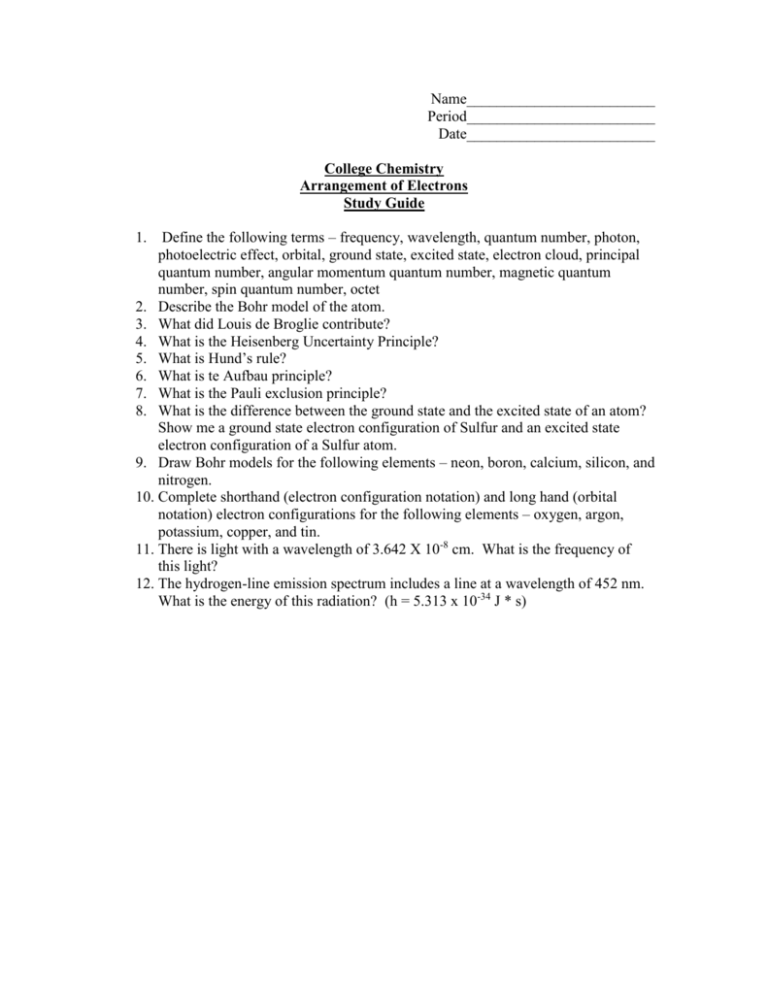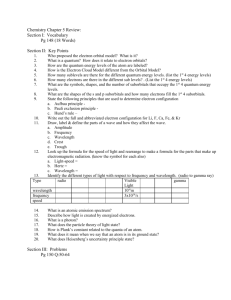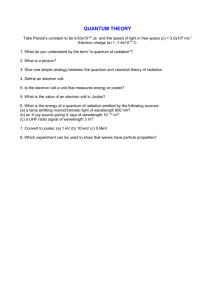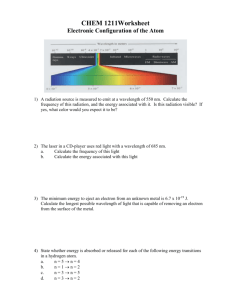Arrangement of Electrons in Atoms Study Guide
advertisement

Name_________________________ Period_________________________ Date_________________________ College Chemistry Arrangement of Electrons Study Guide Define the following terms – frequency, wavelength, quantum number, photon, photoelectric effect, orbital, ground state, excited state, electron cloud, principal quantum number, angular momentum quantum number, magnetic quantum number, spin quantum number, octet 2. Describe the Bohr model of the atom. 3. What did Louis de Broglie contribute? 4. What is the Heisenberg Uncertainty Principle? 5. What is Hund’s rule? 6. What is te Aufbau principle? 7. What is the Pauli exclusion principle? 8. What is the difference between the ground state and the excited state of an atom? Show me a ground state electron configuration of Sulfur and an excited state electron configuration of a Sulfur atom. 9. Draw Bohr models for the following elements – neon, boron, calcium, silicon, and nitrogen. 10. Complete shorthand (electron configuration notation) and long hand (orbital notation) electron configurations for the following elements – oxygen, argon, potassium, copper, and tin. 11. There is light with a wavelength of 3.642 X 10-8 cm. What is the frequency of this light? 12. The hydrogen-line emission spectrum includes a line at a wavelength of 452 nm. What is the energy of this radiation? (h = 5.313 x 10-34 J * s) 1.











